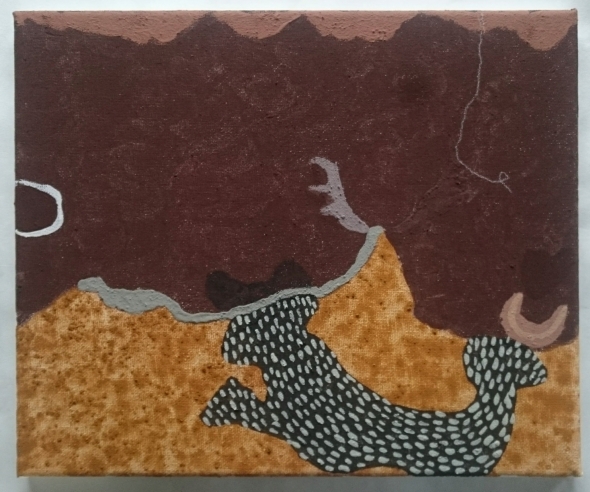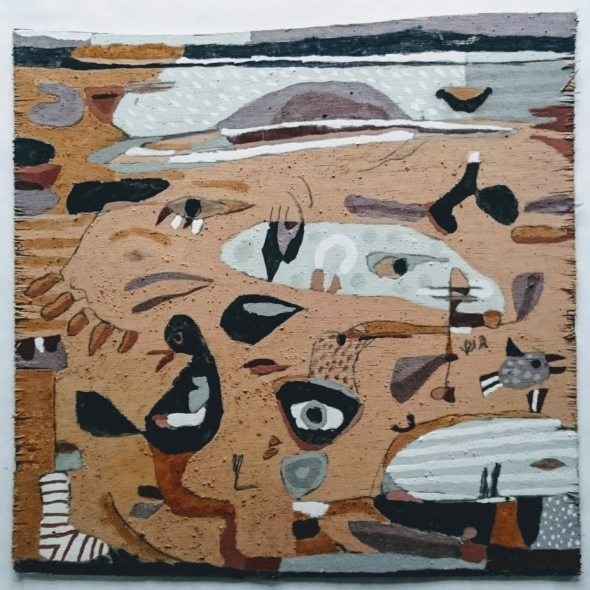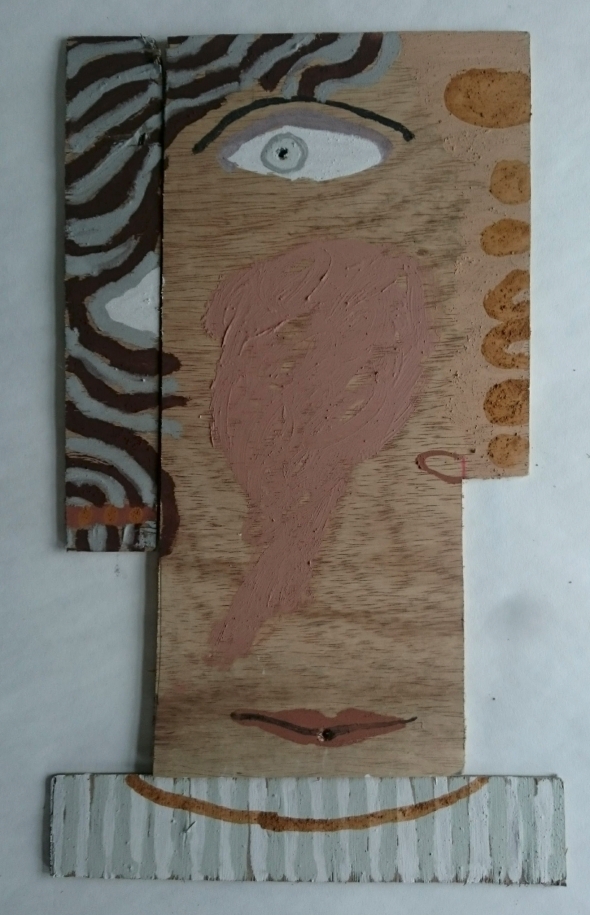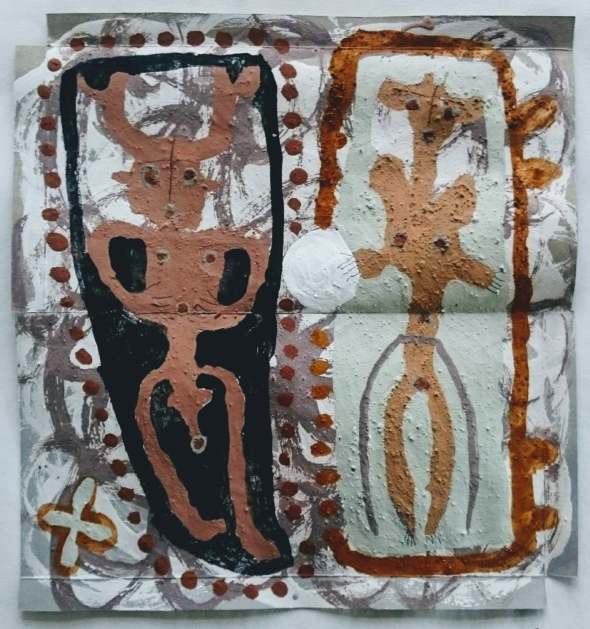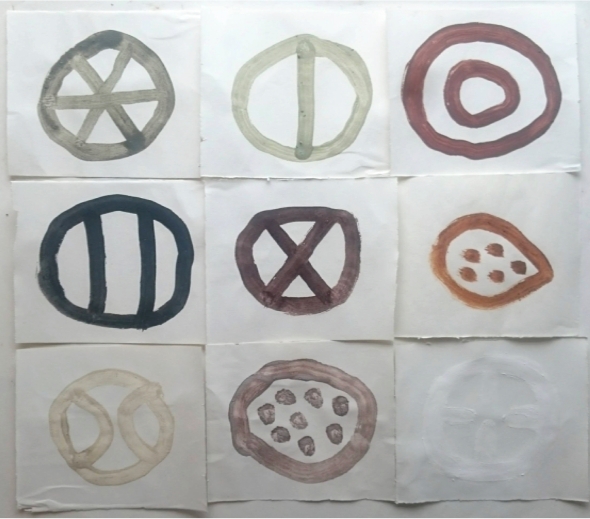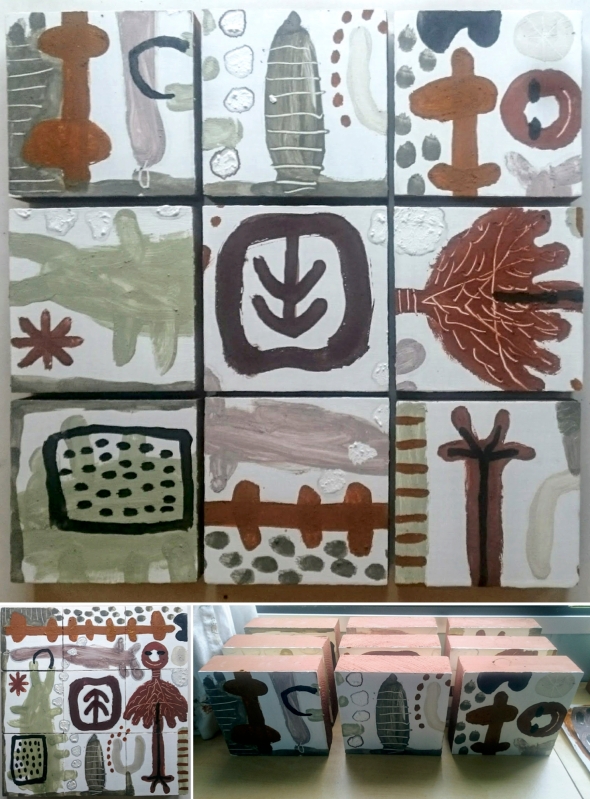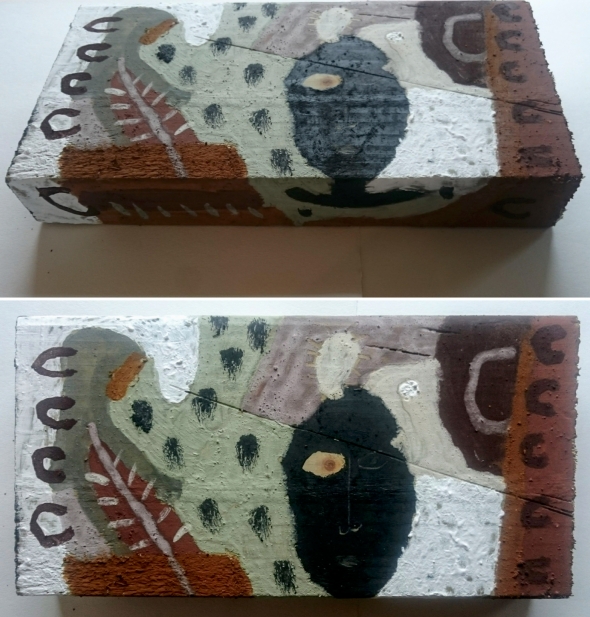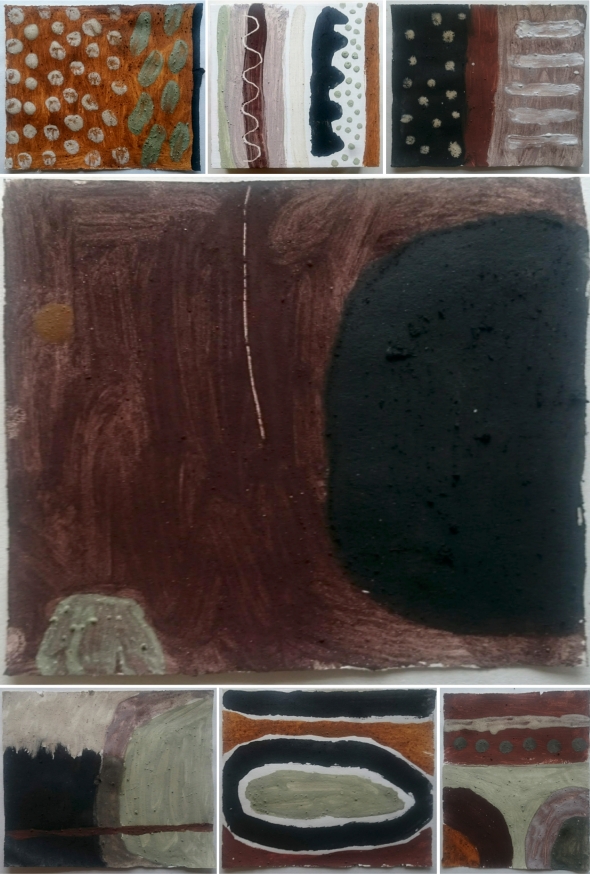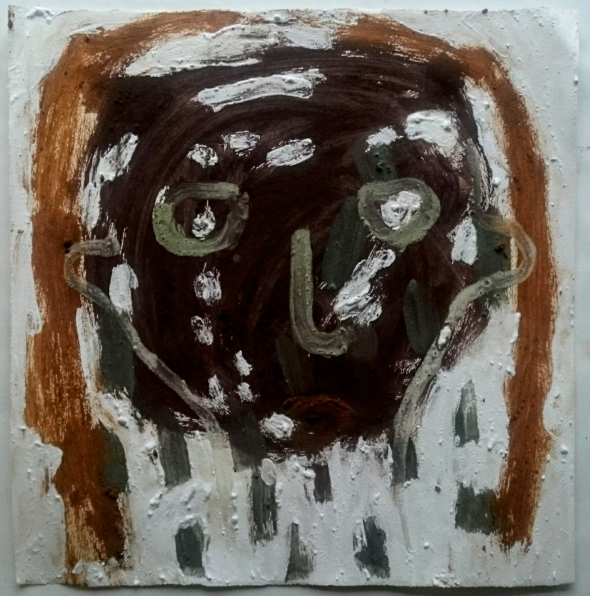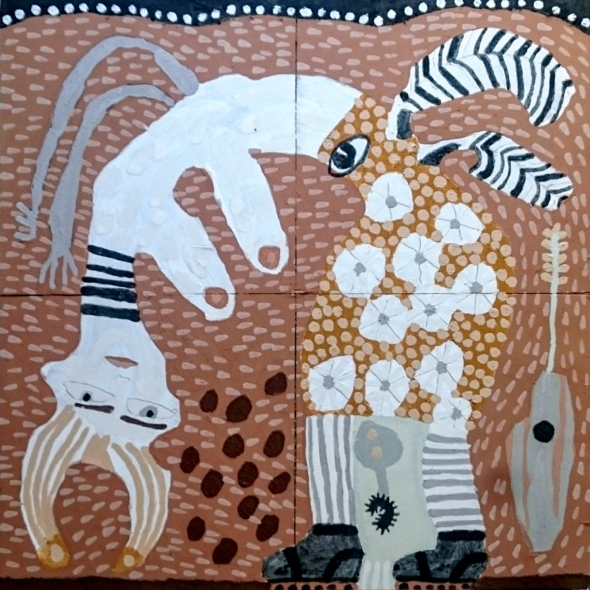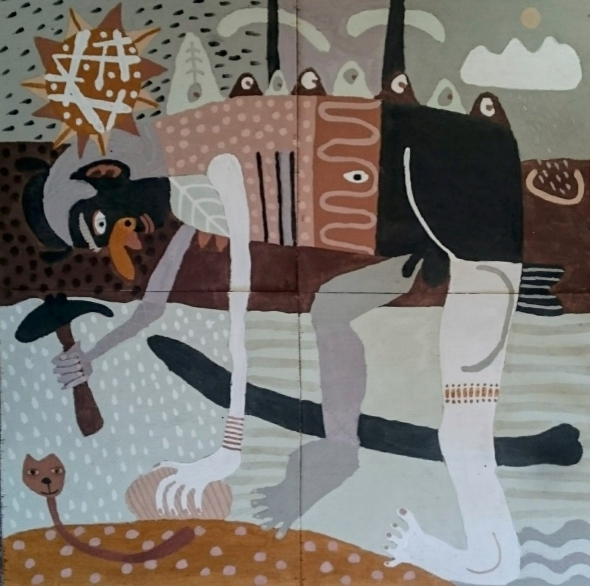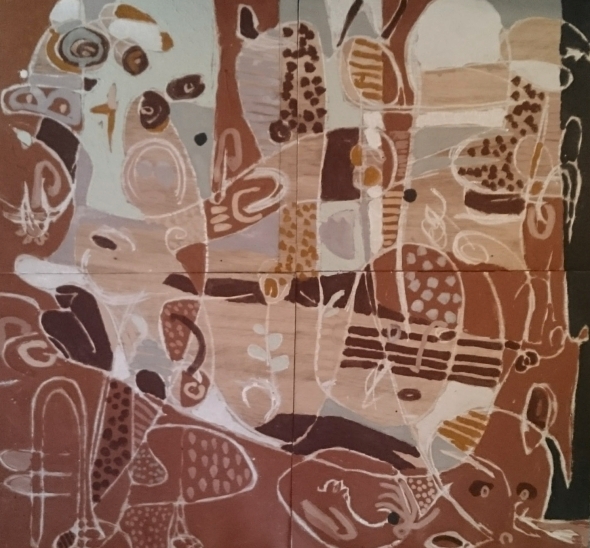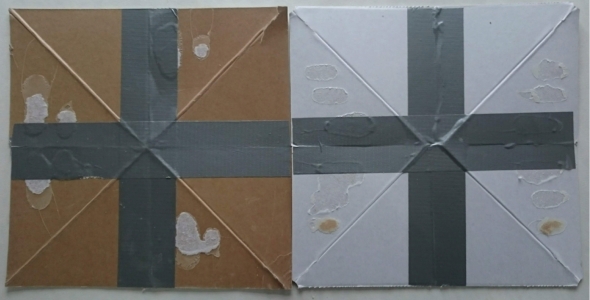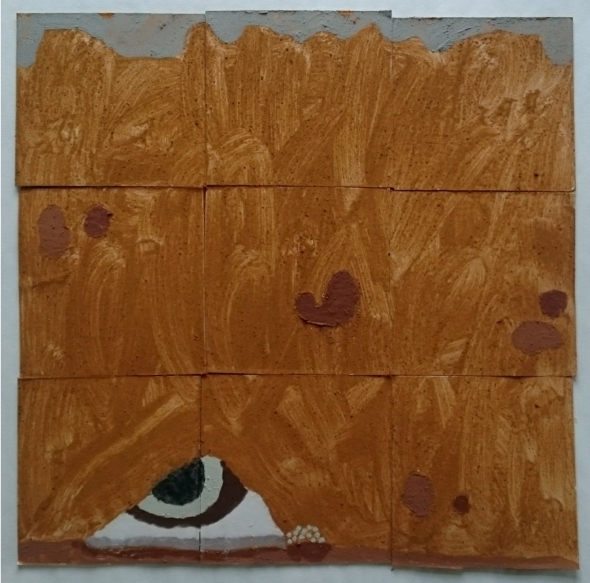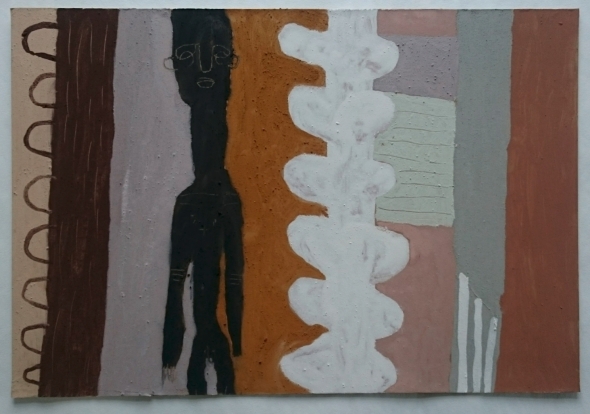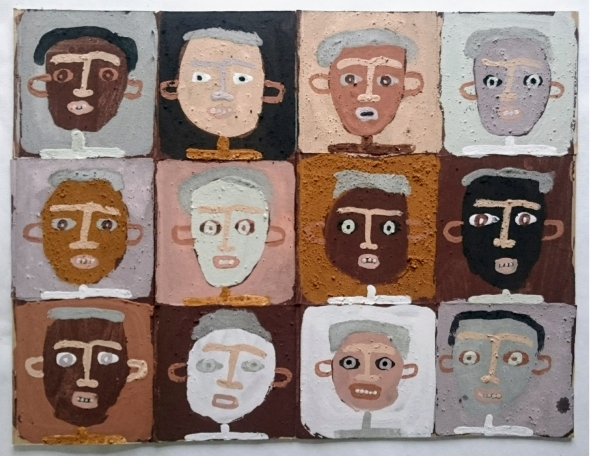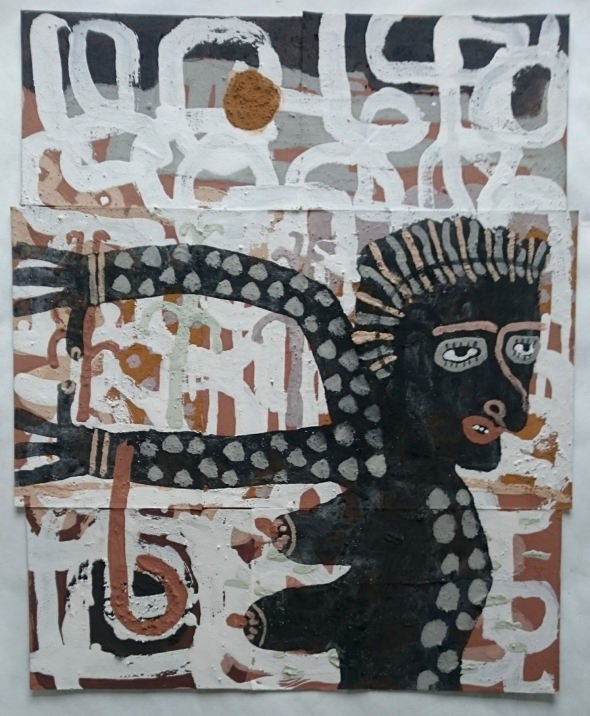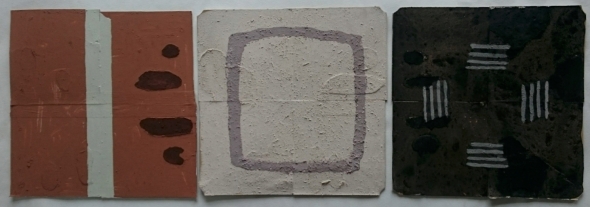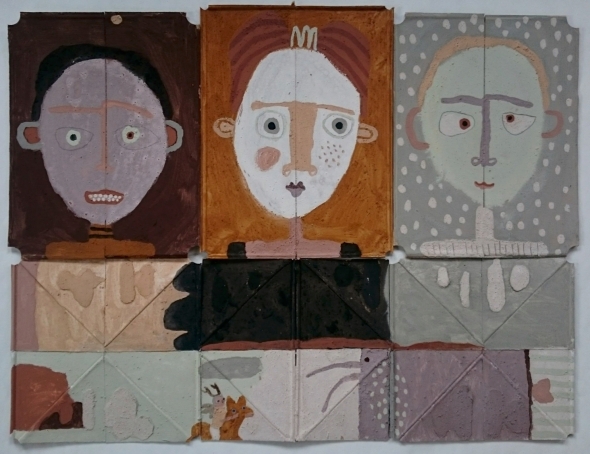home: research, research and inspiration – early 2016 update
Posted: June 15, 2016 Filed under: A BUNDLE OF STICKS, activ8, BIOSPHERic, eARTh, Uncategorized | Tags: art and science, Arte Povera, arts research, collaboration, Devon, Earth, earth pigments, East Devon, eco art, Ecology, ecopsychology, Environmental art, Feeling, indigenous culture, Interdisciplinarity, North Devon, North Devon Coast, Pigment, poetry, Soil Culture 2 Commentswater, air and earth
sticks and stones
and, somewhere, fire
.
as the year unfolds
to a new life
within us
.
and you grow
and hold us rapt
in your emphatic personality
.
we deliberate upon Nature
each delicate
and deafening response
.
there is red and black and grey and green
dirt to some
riches to others
.
grinding away
what is left
to leave
.
more
and more
and more
.
we play
and learn
we play together
.
knees
teeth
home
.
 home: County Clare, Ireland © p ward 2016
home: County Clare, Ireland © p ward 2016
The year began with family and friends in a rainswept County Clare, Ireland, my home for 10 years. Many of the places I wanted to revisit and share were beneath meters of water. Things, of course, had changed for better and worse but the spirit of the land still shone through.
 home: Lake Vyrnwy, Powys, Wales © p ward 2106
home: Lake Vyrnwy, Powys, Wales © p ward 2106
Then more mountains and lakes, family and friends, as my brother’s path shifts to the Welsh borders, an area I have not visited before but will visit again. This time snow, ice, fog and sunshine accompanied my journey. Lake Vyrnwy reservoir submerged a Welsh village to supply England with water.
 home: Ilfracombe, winter 2016 © p ward 2016
home: Ilfracombe, winter 2016 © p ward 2016
And at ‘home’ the winter lashes the coastline, reshaping and reforming. Ilfracombe was originally named after King Alfred and was gifted to two of his sons as a sheltered harbour on the western approaches to his kingdom. Before then an iron-age hill fort overlooked the natural harbour from, what is now, Hillsborough nature reserve. This part of the North Devon coast is formed predominantly from Devonian slates, sandstones and shales and boasts some of the highest sea cliffs in England. We have a new studio here that we hope will provide a base for our creative endeavours and space for others to enjoy.
 home: Barnstaple Bay and Hele, North Devon © p ward 2016
home: Barnstaple Bay and Hele, North Devon © p ward 2016
 home: Holdstone Down, Combe Martin, North Devon © p ward 2016
home: Holdstone Down, Combe Martin, North Devon © p ward 2016
 let’s talk dirt! (White Moose Gallery, CCANW, Heritage Lottery Fund, Bideford Pottery, IGI Ltd, Roger Cockram)
let’s talk dirt! (White Moose Gallery, CCANW, Heritage Lottery Fund, Bideford Pottery, IGI Ltd, Roger Cockram)
In May, as part of the CCANW Soil Culture project, I led a walk and talk with the White Moose Gallery and supported by the Heritage Lottery Fund, to celebrate North Devon’s relationship with its earth resources. “Let’s Walk and Talk Dirt!” involved local potters, Harry Juniper and Roger Cockram, geologists Chris Cornford and Andrew Green, and soil scientist David Hogan to present some different perspectives about our local resources. Participants really enjoyed the interdisciplinary nature of the events but were frustrated by the lack of time to explore the subject matter in more depth. We are now working towards a ‘summer school’ to further explore North Devon’s potteries, pigments, rocks and soils.
 Sidmouth, East Devon © p ward 2106
Sidmouth, East Devon © p ward 2106
 Jacob’s Ladder beach, Sidmouth, East Devon © p ward 2016
Jacob’s Ladder beach, Sidmouth, East Devon © p ward 2016
The Thelma Hulbert Gallery, Honiton, East Devon invited me in May, to run painting with earth workshops to accompany their ongoing Soil Culture exhibitions. The first workshop introduced the ideas to a small group of partially sighted children from the WESC Foundation, providing a space for us to enjoy the more than visual experience of the process and materials. I was also excited to be exploring a new area of the country, encouraging me to find new pigments and learn about their geology and history. The second workshop, for artists, included an invigorating morning field trip to Jacob’s Ladder beach in Sidmouth to gather small quantities of the iron-rich red and green mudstones, and whatever else took our fancy, followed by an afternoon of furious experimentation grinding and binding a selection of pigments with a variety of mediums. It was great to meet some new faces in such a lively and friendly gallery.
 home: Wessex – Branscombe beach, East Devon; Hardy country (chalk and flint) © p ward 2016
home: Wessex – Branscombe beach, East Devon; Hardy country (chalk and flint) © p ward 2016
Something that did surprise me was the presence of chalk in the landscape of East Devon. Having been raised in Portsmouth I am familiar with the chalk and flint of the South Downs and Isle of Wight but wasn’t aware of it so far west along the coast. The sedimentary Cretaceous beds at Beer, that I saw from Branscombe beach during a day of research, lie above Upper Greensand that then rests on the more familiar Mercian Triassic red mudstones of South Devon. Apparently there is an ‘unconformity’ here in that the interceding Jurassic layer is missing, the area being land during that era. The nodules of flint and chert present in the Chalk and Upper Greensand that make up the beaches are also apparent in the local architecture creating further similarities to the South Downs and other Chalk areas across Europe.
One such region, that I also feel an affinity with through my ancestry and boyhood cycling adventures, is the Wessex Downs. The ancient country of Wessex encompassed Hampshire, west to the Cornish borders, and Wiltshire, Dorset, Devon and Somerset. In more recent times its character and characters have formed the backdrop for the literary works of Thomas Hardy. I was recently contacted by a research fellow from Exeter University to collaborate in a project to explore the value to health and well being of arts-based environmental workshops. His previous research looked at the work of Thomas Hardy in relation to the Wessex landscape. We are now waiting to see if our initial funding application has been successful before embarking on a major AHRC project around a similar theme. It has been fascinating working with a complete stranger towards a shared goal.
 Hele community group sculpture proposal sketches © eARTh 2016
Hele community group sculpture proposal sketches © eARTh 2016
Meanwhile, closer to home again we have been working with the local community towards re-landscaping an unsightly patch of ground behind the bus shelter in our village. It was good to be invited, to meet some more of our neighbours, to learn about the history of the village and to think how to we might alter such a space to celebrate the area. It was recently discovered that the area is owned (rather than it being public space) which has put the project back somewhat!?
 sketches in wood and stone © p ward 2016
sketches in wood and stone © p ward 2016
And back in the studio I have been enjoying putting together some new work (see previous post) using old offcuts of wood, old pots of paint and some new pigments. After 9 months I finally feel like I am settling in, enjoying the space and making something new, as well as finding time for my other interests and beautiful family. With a new arrival imminent we’ll be working hard to keep it up…
 jacob’s ladder, earth pigments on canvas © p ward 2016
jacob’s ladder, earth pigments on canvas © p ward 2016
 corn mill close, masonry paint on painted board © p ward 2016
corn mill close, masonry paint on painted board © p ward 2016
 offcuts – sketch in wood © p ward 2016
offcuts – sketch in wood © p ward 2016
© P Ward 2016
Soil Culture: The Publication
Posted: January 13, 2016 Filed under: activ8, eARTh | Tags: art and science, arts research, Bideford Black, Earth, earth pigments, eco art, Ecology, ecopsychology, Environmental art, Interdisciplinarity, Pigment, Soil, Soil Culture Leave a commentThe Soil Culture project led by CCANW and RANE will be drawing to a close soon with its final exhibition at Peninsula Arts in Plymouth from 16th January to 19th March 2016[i]. The project as has been documented in a 120-page publication with essays by prominent soil scientists and soil artists, along with illustrated accounts of residencies and other activities enjoyed during the 3-years.
 soil culture – the publication (cover), images © p ward 2015
soil culture – the publication (cover), images © p ward 2015
My involvement in the project began when I met CCANW director Clive Adams in 2009. I presented him with six small glass pots of ground earth pigments from North Devon. He suggested I meet soil artist Dr Daro Montag at Falmouth University who was just starting an MA Art & Environment Course, which I subsequently attended.
 north devon landscape (ground earth pigments) © p ward 2008
north devon landscape (ground earth pigments) © p ward 2008
I was invited to join the Soil Culture project development team in 2011. My contribution has also involved workshops, exhibitions and some of the imagery used to promote and support it. I was recently asked to write a short essay for the publication and retake a series of photographs of ground and raw earth pigments to be used for the cover and chapter/section headings…
 raw and ground earth pigments for soil culture publication © p ward 2015
raw and ground earth pigments for soil culture publication © p ward 2015
The publication is available from http://www.ccanw.co.uk/ at a price of £15 per copy.
© p ward 2016
[i] Peninsula Arts Gallery, Roland Levinsky Building, Plymouth University, PL4 8AA. Open Monday-Friday 10am-5pm, Saturday 11am-4pm
Soil Culture: DEEP ROOTS
Posted: October 30, 2015 Filed under: eARTh | Tags: art and science, Arte Povera, arts research, earth pigments, eco art, Environmental art, Pigment, Soil, Soil Culture, Visual arts Leave a commentFalmouth Art Gallery 19 September – 21 November 2015,
and at Peninsula Arts, Plymouth University 16 January – 19 March 2016
Having been involved with the development of the Soil Culture project since 2011 it was a great honour to be invited to be part of its final exhibition alongside such highly respected names in the world of environmental art as herman de vries, Ana Mendieta, Richard Long, Mel Chin, Chris Drury, David Nash and Andy Goldsworthy, to name but a few. The show aims to express the way artists have worked with and about soil and ranges from simple soil rubbings and paintings, alongside sculptural installations and bioglyphs (a photographic process using microbes) to soil remediation projects and large-scale earth works. It is also the perfect culmination to the long and distinguished career of CCANW’s enthusiastic director Clive Adams.
 deep roots – earth pigment display case contents (© p ward & f owen 2015)
deep roots – earth pigment display case contents (© p ward & f owen 2015)
My own contribution to the exhibition was an earth pigment painting completed in 2009, as well as installation of three glass top display cases showing different aspects of soil art including pigments, soil science and soil biology to help contextualize the other work in the exhibition. Helping install the exhibition reminded me of the attention to detail necessary that makes work of this caliber really shine – it took 3 of us over 6 hours to hang herman de vries’ grid of 16 soil rubbings and a team of 8 a week in all to hang the show, not to mention the years of preparation involved in bringing all the work together!!
 soil culture – deep roots (Claire Pentecost) exhibition view, courtesy CCANW 2015
soil culture – deep roots (Claire Pentecost) exhibition view, courtesy CCANW 2015
 deep roots – rubbing shoulders with herman de vries (© p ward 2015)
deep roots – rubbing shoulders with herman de vries (© p ward 2015)
 potential II, earth pigments on paper © p ward 2009
potential II, earth pigments on paper © p ward 2009
 soil culture – deep roots, exhibition view, courtesy CCANW 2015
soil culture – deep roots, exhibition view, courtesy CCANW 2015
© P Ward 2015
painting together workshops at the white moose
Posted: August 15, 2015 Filed under: BIOSPHERic, eARTh, educ8 | Tags: Arte Povera, arts research, Bideford Black, collaboration, Devon, Earth, earth pigments, eco art, Ecology, ecopsychology, Environmental art, indigenous culture, North Devon, North Devon Coast, Pigment, Soil, Soil Culture, Visual arts Leave a commentTo accompany our[i] recent exhibition, painting together, at the White Moose Gallery[ii] in Barnstaple, we offered three workshops to explore the possibilities of creative collaboration through painting with local earth pigments. The first two workshops consisted of morning visits to prominent pigment sites followed by afternoons making paint and painting together on a shared canvas in the gallery. The third workshop was spent entirely in the gallery and looked closer at paint making techniques before using rocks and soils gathered in the previous outings to work with.
North Devon has an extremely rich geology – a combination of Devonian, Carboniferous, Perma-Triassic and more recent glacial deposits – that has shaped the way we have and still relate to the environment. Glacial clays have provided excellent material for local potteries. Copper, iron, sliver and tin were mined on Exmoor. Culm grasslands have offered fertile grazing for beef, dairy and other livestock. And different earth pigments have been extracted for both industrial and artistic applications. Bideford Black (and anthracite) was mined across the region until 1969, while raw umber was extracted from locations around Combe Martin[iii]. But wherever we go there is always an incredibly varied spectrum of earth colours to be used, representing and celebrating sense of place however we choose to express ourselves.
Sharing a surface to work on – in this case a previously prepared canvas – was found to be a fun, if sometimes frustrating, but rewarding and liberating experience. Sharing the whole experience – gathering pigments, making paint, sharing lunch and conversation, working on a communal surface and finally reflecting on the day – offered new ways of working beyond the more often isolated practice we enjoy. It’s not for all but can help shift our practice as artists into new areas, seeing how others work, observing our own methods, habits and expectations from a different perspective and raising interesting questions of ownership, value and public perception towards communal ways of working.
fremington quay eARTh walk 27615
 fremington quay eARTh walk 1 © eARTh and K McEndoo 2015
fremington quay eARTh walk 1 © eARTh and K McEndoo 2015
A first impression of Fremington Quay may be that of a fairly non-descript quay on the bend of a muddy estuary. However, when we look a bit deeper a rich history is evident. It was once one of the largest ports in the southwest, exporting iron, wool and clay, amongst other local products, around the world and importing coal and lime from South Wales. Until recently the Quay was a major railway siding, replaced now by the Tarka Trail cycle path extending from Barnstaple to the Ball Clay quarries at Meeth and Peters Marland south of Torrington. Its history is excellently displayed in the newly refurbished museum at the equally excellent café in the old station building.
The Quay sits broadly on the meeting of the Devonian (450 million years ago) and Carboniferous (350 million years ago) geological eras, a weakness in strata marked by the River Taw’s meandering intersection. The underlying carboniferous shales, slates and mudstones of the Crackington Beds, extend west to Hartland Point, and are capped on the southern banks of the estuary by glacial deposits from the Flandrian Ice Age 40,000 years ago. All this creates ideal conditions for the amazing array of pigments to be found along the low cliffs beyond the large disused stone limekiln west of the quay. A few miles inland Fremington clay pits provided fine red clay until 2013, helping establish and maintain the local potteries in Barnstaple and Bideford. The clays were laid down as sediments in glacial lakes and riverbeds. The folds, cracks and twists in the sedimentary carboniferous rocks allow for oxidization of minerals, offering an exquisite range of colours and textures. Some have said that in other countries the site would be considered a national heritage site. For now however it is protected as a Site of Special Scientific Interest.
I first came across the site when walking my dog many years ago, noticing the fantastic colours and rocks. However, it wasn’t until I started seriously researching earth pigments that I actually touched the rocks and found the colour. I have since visited with eminent geologists form the Ussher Society and Devonshire Association to learn more about it – although to be honest I wonder if I have not become just more confused, each ‘expert’ offering a different theory of the areas formation, age and make-up.
 fremington quay eARTh walk 2 © eARTh and K McEndoo 2015
fremington quay eARTh walk 2 © eARTh and K McEndoo 2015
For the painting together workshop the participants were bowled over by both the area’s history and geology and the amazing array of colours available. The painting we made is, I think evidence, of the lively experience and the richness of the site. It was subsequently hung in the Create Centre in Bristol as part of the Soil Culture exhibition.
 fremington quay eARTh walk, earth pigments on canvas © eARTh, K McEndoo, S Levy 2015
fremington quay eARTh walk, earth pigments on canvas © eARTh, K McEndoo, S Levy 2015
Greencliff eARTh walk 15715
Bideford Black has become popular among artists recently, after numerous projects focusing on its local significance and artistic potential. This workshop was therefore, not surprisingly, well attended with 10 participants and thankfully the weather was glorious. While the Bideford Black deposits exposed at Greencliff were the main attraction, there is a good range of other usable pigments easily accessible from the attendant sandstones and clays – white, grey, orange and pink rocks and clays were gathered, along with other beach detritus, and taken back to be enjoyed in the afternoon painting session.
 Greencliff eARTh walk workshop 1 © eARTh 2015
Greencliff eARTh walk workshop 1 © eARTh 2015
 Greencliff eARTh walk workshop 2 © eARTh 2015
Greencliff eARTh walk workshop 2 © eARTh 2015
There being more people made for a quite chaotic and crowded painting together experience, with two smaller canvasses being provided to take a specific place in the White Moose show. Limitations and parameters are an important aspect of any creative process and these were discussed at length within the context of the day’s workshop. Participants ranged from experienced artists and students to designers and other interested parties. Again the results and insights gained were an exciting reflection on the site, its history ad geology, the materials and the day’s events.
 greencliff eARTh walk I & II, earth pigments on canvas © eARTh 2015
greencliff eARTh walk I & II, earth pigments on canvas © eARTh 2015
painting together, White Moose 25715
After a brief overview of previous workshops and introduction to the materials, the final workshop experimented with various methods of paint making including using egg tempera, gum Arabic and PVA glue as binders. As a theme we focused on water and the sea. The rocks, clays and soils we were using were predominantly sedimentary, being laid down thousands and hundreds of millions of years ago under the ocean, by rivers, in lakes or by ice in glacial times. This is an idea that Francesca and myself are both interested to investigate and participants were happy to indulge us.
 painting together workshop © eARTh 2015
painting together workshop © eARTh 2015
The group shared their own experiences and relationships with water, and more specifically the sea, and continued to use this as a focus for mark making, imagery and discussion throughout the process. We thought of immersion, of healing, of play, of floating and sinking, of mysterious and murky depths and of a power wild and untamable. We painted creatures and waves. We blew bubbles. We wallowed in mud. One of the challenges was to paint the sea without the colour blue! The paintings success for me lay in its obscurity, its vagueness and shifting focus. Were we beneath the sea or floating in primordial swamp, part of it or separate? Its hard to tell, but we had a great day making it.
 the sea, earth pigments on canvas © eARTh 2015
the sea, earth pigments on canvas © eARTh 2015
Many thanks to Karen and Stella and to all those who took part in the workshops, to all who visited and enjoyed the exhibition, to all who contributed to the work and especially to the White Moose for hosting the exhibition. Unfortunately, we didn’t sell any work and had to cancel the ‘in conversation’ event through lack of interest but maybe that is a sign of the times or of a prevailing attitude in North Devon towards more contemporary/conceptual art forms but also an interesting reflection on people’s response to communal work. But whatever each time we entered the space we felt extremely proud and pleased with the show, with the work we had done together and the experience we had offered all who took part. We have thoroughly enjoyed it and hope to take the show further afield in due course.
…
But for now, all good things must come to an end…
 un-painting the moose © eARTh 2015
un-painting the moose © eARTh 2015
© P Ward 2015
[i] http://earthnorthdevon.wix.com/arts
[ii] http://www.whitemoose.co.uk/site/
[iii] According to local sources “no paint box was complete without Berrynarbour umber.” The pigment was mined until the 1790s and ground with ochre from East Down before being sent to London to be included in Reeves paint boxes. I have taken umber from the River Umber that runs through Combe Martin but as yet I have not located the quarries where it was mined.
Tales of the Riverbank: BLACK & WHITE
Posted: June 21, 2015 Filed under: activ8, BIOSPHERic, eARTh | Tags: arts research, Bideford Black, collaboration, Devon, Earth, earth pigments, eco art, Ecology, ecopsychology, Environmental art, North Devon, North Devon Coast, Pigment, Soil Culture, Visual arts Leave a commentMany thanks to those who joined us for a splendid morning in the company of ex-Bideford Black miner Ron Pither, as we slowly walked the length of Mines Road in East-the-Water recalling days-gone-by, and for an expressive afternoon painting together with Bideford Black and white Peters Marland Ball clay onto a shared canvas at the old Bideford Art School on the Quay, as part of the first Tales of the Riverbank event organized by Bideford Bay Creatives. The events – workshops, walks and talks – spread throughout the summer, explore the natural and social history surrounding the River Torridge in North Devon.
 a walk down memory lane, mines road © p ward 2015
a walk down memory lane, mines road © p ward 2015
As we walked, Ron’s vivid and joyful recollections of his time as a miner and young man growing up in East-the-Water the 1950’s, laced with other historical details by myself, brought greater depth and colour to a seemingly non-descript lane on the outskirts of town. Mines Road, as the name suggests, used to lead to the Chapel Park pigment mines that finally closed in 1969 – there is little physical evidence left today to reveal its not too distant past. I had met Ron as part of the Story of Bideford Black project for the Burton Art Gallery in 2013 and he jumped at the opportunity to share more of his memories today.
 painting together – BLACK & WHITE, a work in progress © p ward 2015
painting together – BLACK & WHITE, a work in progress © p ward 2015
After lunch the small, but select, party of artists and others interested in local history worked together to create a painting that somehow responded to the memories shared during the walk and to the specific local materials provided. Decisions were made as a group at critical stages of the process regarding the definition of parameters and as to how the painting should progress, revealing individual and collective ideas about the creative process in general and the specific nature of the materials involved. The painting produced will be exhibited as part of Soil Culture at create in Bristol from July 8th.
 painting together – BLACK & WHITE, the gallery © p ward 2015
painting together – BLACK & WHITE, the gallery © p ward 2015
Many thanks also to Learn Devon for providing such a great space to conduct the workshop.
Further Links
- For more information about further Tales of the Riverbank events please visit http://www.bbcdevon.org/2015/05/11/book-for-tales-of-the-riverbank/
- For more information about Bideford Black please visit http://bidefordblack.blogspot.co.uk/
- For more information about painting together workshops please visit http://www.whitemoose.co.uk/site/events-at-white-moose-gallery-north-devon/
- For more information about Soil Culture at create please visit http://www.ccanw.co.uk/create.htm
P Ward 2015
painting together
Posted: June 18, 2015 Filed under: A BUNDLE OF STICKS, activ8, BIOSPHERic, eARTh, educ8 | Tags: art and science, arts research, Bideford Black, collaboration, Devon, earth pigments, eco art, Ecology, ecopsychology, Environmental art, indigenous culture, Interdisciplinarity, North Devon, Pigment, Soil Culture, Visual arts Leave a commentan investigation in creative collaboration through painting
(in support of my/our latest exhibition in north devon)
 painting together to save the world, images courtesy b stokes, s orrell, p ward 2011
painting together to save the world, images courtesy b stokes, s orrell, p ward 2011
Pete Ward and Francesca Owen
White Moose Gallery, Trinity Street, Barnstaple, Devon, EX32 8HX
13th June – 1st August 2015
“Art does not reproduce the visible but makes visible” Paul Klee
painting together is a project by North Devon based artists Pete Ward and Francesca Owen that brings together concepts of contemporary art (dialogical art, ecopsychology, environmental awareness and process-based interdisciplinary collaboration) with the more traditional practice of paint making and painting from locally occurring earth pigments. While Pete and Francesca continue to work on individual projects in their shared studio space and on more collaborative pieces together, they will also be inviting selected artists and members of the public to take part in group paintings/makings in various settings and locations, offering workshops and space for reflection and feedback about the project and process involved.
 painting together, soil culture @ The Home & The World, Dartington Hall © p ward 2012
painting together, soil culture @ The Home & The World, Dartington Hall © p ward 2012
 painting together, early days © f owen, p ward 2011-13
painting together, early days © f owen, p ward 2011-13
We have occasionally attempted to paint simultaneously, or in turns, on a surface with a fellow artist with varying results, the process often revealing the dynamic of egos and styles. In a similar way we are always responding to the relationship between ourselves as creative practitioners and the medium and environment with which we chose to work. Our experience of working with earth pigments has certainly led to a massive shift in practice both concerning our understanding and relationships with specific colours and the process involved. Earth pigments have also revealed a surprising freedom of expression and confidence seldom felt with more commercially available media – everyone just has a go! However, when working with other human beings a whole set of new questions and creative possibilities arise. For example, who owns the painting and to whom does credit for its creation lie? At what point do our egos let go and the collective subconscious come into play, if at all? How much are our individual actions influenced and dictated by the dynamic ecology of the group? Do guidelines and prescribed parameters help or hinder the process and then how and to what extent? Is the sense of satisfaction of making work together the same or different from working as an individual and how? The ‘art work’ of ancient history and indigenous cultures that we presently enjoy is rarely attributed to a sole artist, but more to a group, tribe or moment/phase in earth’s history. Do these works of cultural expression reach beyond the ego to a place of shared experience, of shared intention and mutual respect for the world we inhabit? painting together as a process will hopefully begin to reveal a sense of art more aligned to such sentiments than the overriding individuality of modern times.
 painting together, greencliff © f owen, p ward 2015
painting together, greencliff © f owen, p ward 2015
 painting together, for the love of art © eARTh 2015
painting together, for the love of art © eARTh 2015
 painting together, art trail/art trek © eARTh 2015
painting together, art trail/art trek © eARTh 2015
Art may be seen as a space for creativity to take place, for time, ideas and materials to reveal thoughts and processes anew. Whether this is a painting, a poem, a film, a performance, activity or workshop is all the same. Art may be a catalyst for further creative action and thought rather than merely the product of such actions. It is not always for the artist to dictate any specific outcome but to provide and structure meaningful parameters within which we may engage, actively and imaginatively, with ourselves and the world. To make work with others, within a creatively conscious and reflective environment, is therefore an ideal situation to explore and reveal new and inspiring relationships, while also producing work beyond the ego of individual artists to represent a specific and relevant ecological dynamic.
 painting together, eARTh gown © f owen, s bamford, c thomas, p ward 2015
painting together, eARTh gown © f owen, s bamford, c thomas, p ward 2015
 painting together, soil culture peninsula arts © p ward, d williamson 2015
painting together, soil culture peninsula arts © p ward, d williamson 2015
 painting together, soil culture dartington hall © p ward, CCANW 2015
painting together, soil culture dartington hall © p ward, CCANW 2015
‘These projects mark the emergence of a body of contemporary art practice concerned with collaborative, and potentially emancipatory, forms of dialogue and conversation. While it is common for a work of art to provoke dialogue among viewers this typically occurs in response to a finished object. In these projects conversation becomes an integral part of the work itself.’
(Grant Kester, 2005)
 painting together, annoying stuart fiddes / black, grey, white © f owen, l hudson, r ara, p ward 2015
painting together, annoying stuart fiddes / black, grey, white © f owen, l hudson, r ara, p ward 2015
 painting together, WHITE MOOSE mural © f owen, p ward 2015
painting together, WHITE MOOSE mural © f owen, p ward 2015
 painting together © f owen, p ward 2015
painting together © f owen, p ward 2015
painting together will include opportunities to participate in communal art through workshops, artist’s talks and walks in the local environment as well as the exhibition at the White Moose Gallery in Barnstaple, North Devon. For more information see http://www.whitemoose.co.uk/site/painting-together/
further links
- Working Together http://www.laurahudson.co.uk/blog/2015/6/13/working-together
- for the love of art https://dancingwithdyes.wordpress.com/2015/02/18/for-the-love-of-art/
- eARTh gown https://dancingwithdyes.wordpress.com/2015/04/07/the-beginning-of-making-an-earth-garment/
- TH&TW https://intim8ecology.wordpress.com/2012/06/29/the-home-the-world-a-report/
- the value of trees https://peterwardearth.carbonmade.com/projects/3915674#1
- 500 Children! https://intim8ecology.wordpress.com/2015/01/26/500-children/
- Art Trail / Art Trek https://intim8ecology.wordpress.com/2015/06/18/painting-with-earth-again-a-new-start/
The exhibition at White Moose Gallery has been organized in conjunction with the Centre for Contemporary Arts & the Natural World Soil Culture Project in the International Year of Soils 2015
- White Moose Gallery http://www.whitemoose.co.uk/site/painting-together/
- The Centre for Contemporary Art & the Natural World http://www.ccanw.co.uk/
- International Year of Soils 2015 http://www.fao.org/soils-2015/en/
P Ward 2015
painting with earth (again) … a new start
Posted: June 18, 2015 Filed under: activ8, BIOSPHERic, eARTh | Tags: Arte Povera, Bideford Black, collaboration, Devon, Earth, earth pigments, eco art, Environmental art, indigenous culture, North Devon, Pigment, Soil Culture, Visual arts 2 Commentsart trail ART TREK open studios 2015
Prompted and encouraged by our recent investigation at eARTh into natural paint binders with Clare Thomas and the opportunity to show some new work during two recent open studio events, I have been doing some painting…
 vernal equinox 1 (51x31cm; earth pigments with gum arabic and rabbit skin glue on canvas) © p ward 2015
vernal equinox 1 (51x31cm; earth pigments with gum arabic and rabbit skin glue on canvas) © p ward 2015
 vernal equinox 2 (60x50cm; earth pigments with gum arabic on canvas) © p ward 2015
vernal equinox 2 (60x50cm; earth pigments with gum arabic on canvas) © p ward 2015
 storyteller 3 (50x50cm; earth pigments with gum arabic and rabbit skin glue on canvas) © p ward 2015
storyteller 3 (50x50cm; earth pigments with gum arabic and rabbit skin glue on canvas) © p ward 2015
 crow point triptych (3x60x50cm; earth pigments with gum arabic and rabbit skin glue on canvas) © f owen & p ward 2015
crow point triptych (3x60x50cm; earth pigments with gum arabic and rabbit skin glue on canvas) © f owen & p ward 2015
The different natural binders (gum arabic, rabbit skin glue and damar varnish), new range of colours and larger scale, and inspiration of working closely with another painter, has provided more depth, transparency, fluidity and subtlety in mark-making within my painting and rejuvenated my desire for and understanding of its place within my life. Thank you Clare for your thorough investigation and generous sharing of your discoveries and materials. My own work has continued along its theme of resonance, energy and potential, hopefully offering space for healing and rejuvenation through personal observation and the local assimilation of process, materials and colour. The work is still intuitively aligned to a sense of landscape, connection and place, to nature’s processes and cycles, to magic and the power of intent, meditation and prayer.
 bonk! (250x150cm; earth pigments with rabbit skin glue on canvas) © p ward 2015
bonk! (250x150cm; earth pigments with rabbit skin glue on canvas) © p ward 2015
 i do not love (it is) (78x78cm; earth pigments with gum arabic, damar varnish and rabbit skin glue on canvas) © p ward 2015
i do not love (it is) (78x78cm; earth pigments with gum arabic, damar varnish and rabbit skin glue on canvas) © p ward 2015
 indigo (90x70cm; earth pigments with gum arabic and rabbit skin glue on driftwood board) © p ward 2015
indigo (90x70cm; earth pigments with gum arabic and rabbit skin glue on driftwood board) © p ward 2015
 eARTh open studio © v large 2015
eARTh open studio © v large 2015
The open studio events – Ilfracombe Art Trail 2015 and North Devon Art Trek 2015 – provided an opportunity for free community eARTh painting workshops, further contributions towards Francesca and I’s forthcoming painting together exhibition/project at White Moose Gallery in Barnstaple, and to meet a broad range of people – artists and non-artists alike. Ilfracombe Art Trail, a new and enthusiastically organized local community event including 40 artists in 25 venues throughout the town, brought nearly 150 people through eARTh’s doors in one weekend. While the more established Art Trek, spread across the whole of North Devon for 3 weeks, brought a far smaller number maybe indicating a natural trend towards the ‘local’ within the creative industries. Thank you to all who helped organize both events and to everyone who made time to visit us and contribute to the paintings. The Ilfracombe painting was initially shown at the Landmark Theatre in Ilfracombe before being hung along with a selection of other collaborative and communal works in Barnstaple – see next post.
 full house – community painting at eARTh for ilfracombe art trail 2015 © eARTh 2015
full house – community painting at eARTh for ilfracombe art trail 2015 © eARTh 2015
P Ward 2015
500 children!!
Posted: January 26, 2015 Filed under: A BUNDLE OF STICKS, activ8, BIOSPHERic, eARTh, educ8 | Tags: art and science, Arte Povera, Arts, arts research, Bideford Black, Devon, Earth, earth pigments, eco art, Ecology, ecopsychology, Environmental art, indigenous culture, Interdisciplinarity, North Devon, Pigment, Soil, Soil Culture, Visual arts, workshop 2 CommentsNEWPORT COMMUNITY INFANT ACADEMY ARTSWEEK 2015 – Soil Culture*
 500 children, communal painting, earth pigments on canvas © p ward 2015
500 children, communal painting, earth pigments on canvas © p ward 2015
I was recently invited to develop and lead environmental art activities for Newport Community School in Barnstaple, North Devon. The activities offered opportunities for staff and pupils to explore and celebrate our relationships with Nature, in particular soil and local earth pigments. The school has 500 pupils between 3 and 12 years old. A range of activities, including mud painting, making soil balls, bundles of sticks and leaf sorting, were presented to the teaching staff and then left for them to interpret. The communal artworks created were included in an exhibition for children and parents at the end of the week and a 6x1m earth pigment painting made by the whole school was left as legacy of the week’s hard work.
For me to develop such a large-scale event for so many was extremely daunting – how teachers do it day-in-day-out is amazing! It was incredible to see a painting evolve at the hands of 500 children, with only the most arbitrary guidelines, to become a vibrant expression of their experience and of North Devon itself. All participatory group paintings I have facilitated have somehow turned out well, but I have never tried it with 500 children before, and it is certainly a way of working I hope to pursue further in the future. The other simple activities, and reflection upon them, seemed to give children and staff space to try something new and also a space to learn through a different, more hands-on approach. The whole event has given me a great deal of satisfaction and confidence to tackle such events again in the future.
The exhibition was well attended by some most bemused but interested parents looking for their individual child’s work only to find it absorbed into the totality. The school, to their credit, thoroughly got behind both the educational and experiential value of art activities and also the contemporary conceptual nature of the final exhibition. Many thanks to Georgie Treanor for helping organize ARTSWEEK and to the children, teachers and staff for their patient and enthusiastic participation, and to Francesca for her support and help preparing the canvas.
 francesca hemming the canvas © p ward 2015
francesca hemming the canvas © p ward 2015
soil . making paint . local history . geology . local resources . environment . culture
INTRODUCTION to TEACHERS PACK
“Art does not reproduce the visible, but makes visible” Paul Klee
Art is one way we learn about the world. The learning and creative processes are based on both sensory experience and reflection. The process and expression of such experience is what we know as Art. From the beginning of human history we have learnt about the world through experience of the materials that are available in our immediate surroundings. From this experience, and through trial and error, we have developed the technologies to enable us to survive. As communications and transport have become more versatile and far reaching we have often lost our knowledge and understanding of the local environment and the materials it provides.
In North Devon, as elsewhere, our culture and identity as a region has been based on the natural resources available. For many centuries the chief industries were mining, for iron and copper, and sheep farming wool on the steep hills and valleys. The soils have promoted a rich and varied agriculture from dairy and beef cattle to crops. Bideford and Barnstaple both had large potteries supplied by clay pits in Fremington and Peters Marland. The potteries have unfortunately closed now but the white ball clay pits at Peters Marland and Meeth still quarry and export clay for use in brick- and paper-making. And, of course, Bideford has a black earth pigment named after it that was mined until 1969. Bideford Black was used in the boat industry, to paint tanks in WW2 and by Max Factor to make mascara.
By learning about the materials in our local environment and appreciating their importance to our lives it is hoped that we may also learn to respect them a little more.
“Sitting quietly, doing nothing, spring comes, and the grass grows by itself” Zen Proverb
THE ACTIVITIES
- THE SOUND OF CHILDREN LISTENING – we have quietly listened to the wind and trees and birds and the sounds of Newport. We have felt the sun and wind and rain on our faces and the earth beneath our feet.
 circles made by walking © p ward 2015
circles made by walking © p ward 2015
- CIRCLES MADE BY WALKING – we have been walking in big circles on the playing field, making big muddy drawings with our feet.
 a workshop for a week © p ward 2015
a workshop for a week © p ward 2015
 presentation display © p ward 2015
presentation display © p ward 2015
 paint making table © p ward 2015
paint making table © p ward 2015
 work in progress © p ward 2015
work in progress © p ward 2015
 500 children, communal painting, earth pigments on canvas (detail) © p ward 2015
500 children, communal painting, earth pigments on canvas (detail) © p ward 2015
- 500 children – communal painting on canvas by all members of the school using North Devon Earth Pigments. We have learnt about where paint comes from, how the rocks it is made from are formed, where they can be found in North Devon and how to make paint before adding our mark to the big painting.
 soil investigation table © p ward 2015
soil investigation table © p ward 2015
- Soil Balls – we have been investigating soil brought in by teachers from around North Devon to see what it is made of and what creatures live in it and then forming it into balls with our hands.
 500 soil balls, exhibition table 1 © p ward 2015
500 soil balls, exhibition table 1 © p ward 2015
 500 soil balls, exhibition table 2 © p ward 2015
500 soil balls, exhibition table 2 © p ward 2015
 leaf collage, display table © p ward 2015
leaf collage, display table © p ward 2015
- LEAF COLLAGES – we have been collecting leaves and sorting them to see how many different plants, shapes and colours there are.
 charcoal leaf drawings 1 © p ward 2015
charcoal leaf drawings 1 © p ward 2015
 charcoal leaf drawings 2 © p ward 2015
charcoal leaf drawings 2 © p ward 2015
- CHARCOAL DRAWINGS – we have been looking very closely at leaves and drawing them using charcoal.
 500 BUNDLES OF STICKS, exhibition table © p ward 2015
500 BUNDLES OF STICKS, exhibition table © p ward 2015
- BUNDLES OF STICKS – we have been gathering sticks from the playing field and tying them together. This simple activity has led to discussions about fuel, building materials and ways of tying things.
 dirty hands and cordyline structures © p ward 2015
dirty hands and cordyline structures © p ward 2015
- DIRTY HANDS – we have been getting our hands ‘dirty’, covering them and some paper with mud.
 cordyline structures 1 © p ward 2015
cordyline structures 1 © p ward 2015
 cordyline structures 2 © p ward 2015
cordyline structures 2 © p ward 2015
- CORDYLINE STRUCTURES – we have been using cordyline leaves to explore natural fibres and making all sorts of things from them.
- WORD WALL – we have been writing down words that the ARTSWEEK activities have inspired.
 exhibition space and slide show in the assembly hall © p ward 2015
exhibition space and slide show in the assembly hall © p ward 2015
- SLIDE SHOW – here are some pictures of us exploring, creating and enjoying the activities this ARTSWEEK.
 remnants – soil balls, leaves and bundles of sticks returned to the playing field after the exhibition 1 © p ward
remnants – soil balls, leaves and bundles of sticks returned to the playing field after the exhibition 1 © p ward
 remnants – soil balls, leaves and bundles of sticks returned to the playing field after the exhibition 2 © p ward
remnants – soil balls, leaves and bundles of sticks returned to the playing field after the exhibition 2 © p ward
© p ward 2015
To see more of the work visit http://www.newportprimary.devon.sch.uk/artsweek-19th-23rd-january-2015/
* Soil Culture is a project by the Centre for Contemporary Arts & the Natural World to raise awareness about soil through the arts (www.ccanw.co.uk)
garden waste, woodford 161214
Posted: December 27, 2014 Filed under: A BUNDLE OF STICKS, activ8, BIOSPHERic, eARTh, educ8 | Tags: arts research, Earth, earth pigments, eco art, Ecology, ecopsychology, Environmental art, indigenous culture, Interdisciplinarity, North Devon, Pigment, Soil, Soil Culture, Visual arts, West Somerset Leave a comment spotted flycatcher bundle, woodford © p ward 2014
spotted flycatcher bundle, woodford © p ward 2014
a pleasant few days break in west somerset
after a week of hard work inside the studio.
despite a forecast of persistent heavy rain
and a recurrent mechanical inconvenience
there was sunshine
a chance to tidy the garden
to the sound of wind shaking the trees and familiar birdsong
inspiring peace of mind and a few life-art works
to celebrate the simplicity, beauty and creativity of nature
reflections of place and time and relationship
with thanks…
 garden waste, woodford © p ward 2014
garden waste, woodford © p ward 2014
Waste and wastes implies unwanted or unusable materials. The term is often subjective (because waste to one person is not necessarily waste to another) and sometimes objectively inaccurate…[i]
 another line made by walking, woodford © p ward 2014
another line made by walking, woodford © p ward 2014
In preparation for a local school’s artsweek I will be leading at the end of January I have been researching some very basic materials such as sticks and leaves and mud, and wheelbarrows… I have been invited, as an environmental artist, to develop a series of activities to engage 500 children between the ages of 4 and 12, and their teachers, with ideas of local ecology, its influence on the region’s historical development and our current relationship with it. 2015 being the UN International Year of Soils, and being one of my own specialisms, I have chosen the theme of SOIL. The activities will allow children and teachers to explore and hopefully learn something about the nature of soil and its importance in all our lives. The activities, designed to be starting points for creative journeys for teachers to explore with their classes, will also lead to an end of week environmental art exhibition including work made by every child in the school. The centrepiece will be a large earth pigment painting built up during the week by the children and finished by a group of ‘gifted and talented’ students who have shown a particular aptitude and interest in the arts. The painting will be left as a legacy for the school and acknowledgement of the hard work accomplished during the week. Hopefully the children and teachers will have an enjoyable and memorable time.
© p ward 2014
[i] http://en.wikipedia.org/wiki/Waste

